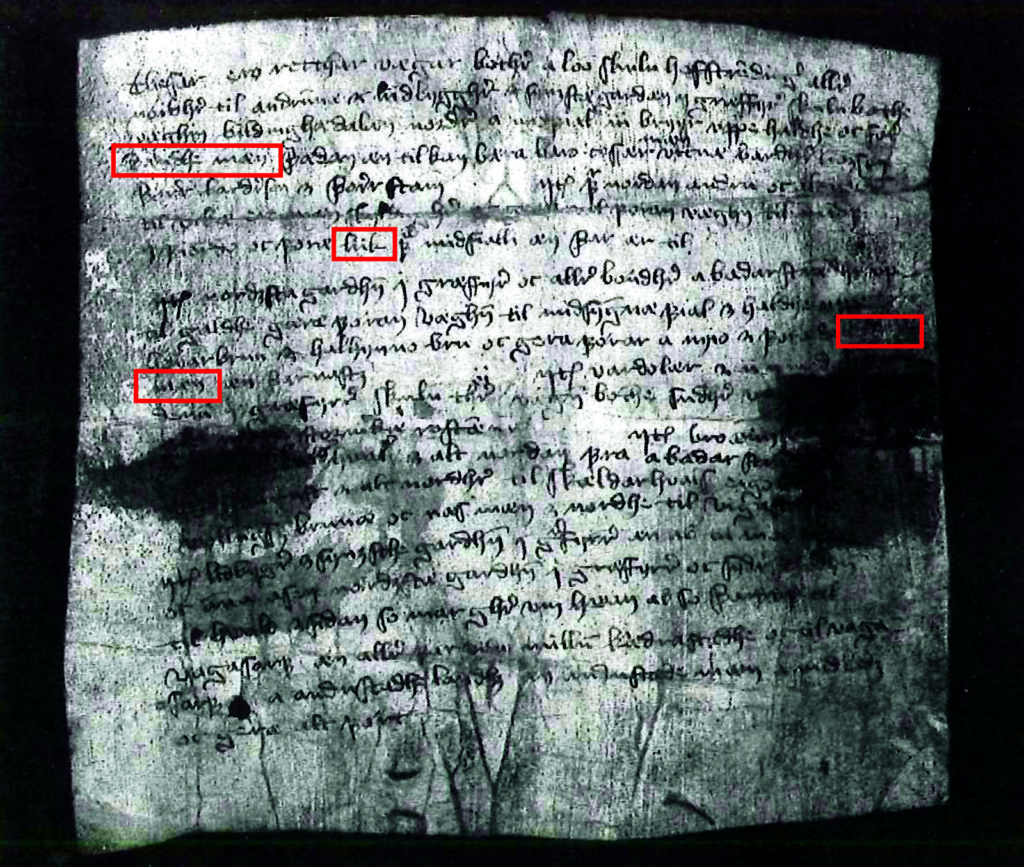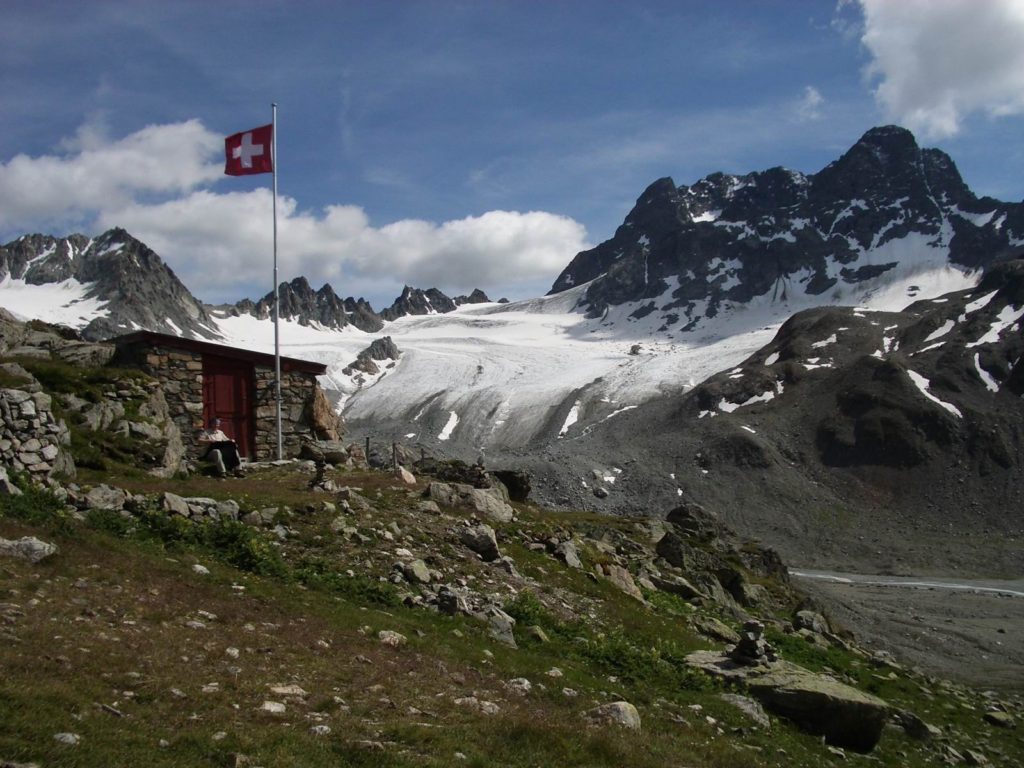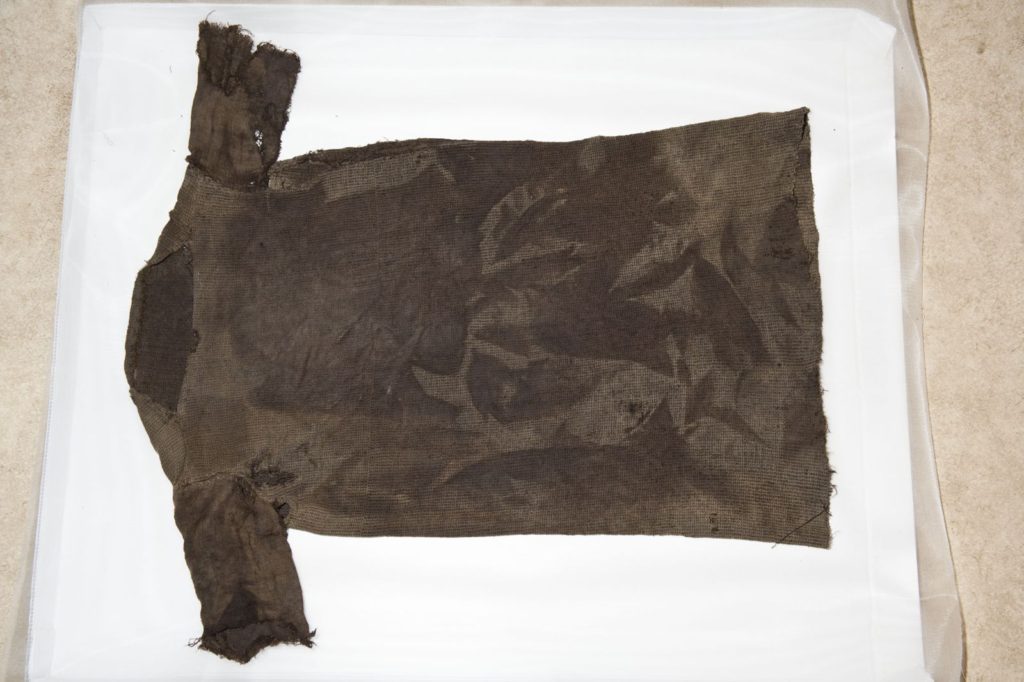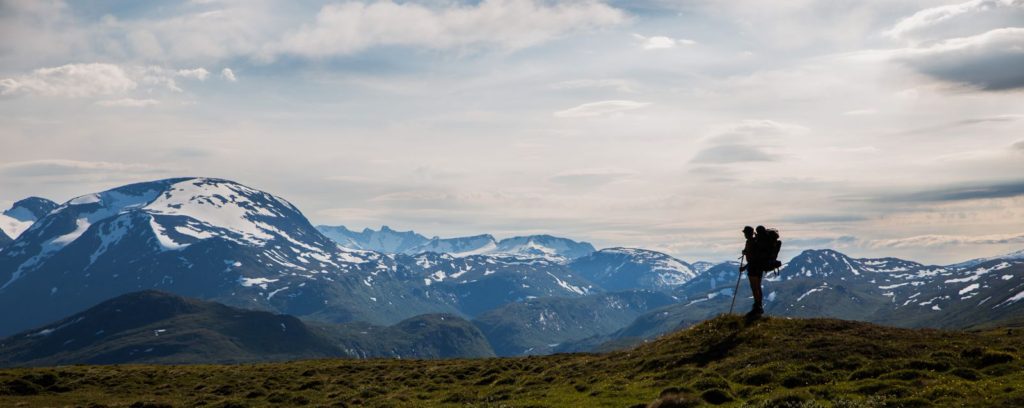When the storm broke and the temperature dropped, the six men and their packhorses were exposed to the full force of winter in the high mountains. They had no chance.
What were they doing in the high mountains in the middle of the winter? Surely, they must have known that it was risky? Sources tell us that they were on a journey of life and death over the mountains to the fjords in the west. The harvest had failed, and food was running out. The men planned to buy barley and transport it back to their farms. It was the only way to get their families through the winter. They had no choice.
This tragedy happened in March 1813 in the mountains between the villages Lom and Skjolden in Norway. It was by no means the first such fatal incident in the area. However, due to the number of deaths, it has come down to us in great detail through written sources. Other deaths in the high mountains in the Lom area are mentioned just in passing, or not at all. There is even a Late Medieval document from Lom stating which farmers were responsible for bringing down daudhe mæn (dead men) and liik (corpses) from the mountains. It must have been a frequent occurrence.

The number of deaths is not surprising; travel in the high mountains was fraught with danger – in Norway as elsewhere. The men from Lom died from exposure, but this was only one risk. Travelers could be killed by snow or rock avalanches, they could fall into glacier crevasses or they could suffer a fatal accident, such as a fall. Robbery is known to have been a real danger in parts of the Himalayas before the British Empire took control. Violence and murder could also happen at high altitude. Ötzi, the mummy found in an icepatch at 3200 m, was killed by a fatal arrowshot in the back.
Most of the histories of the dead in the high mountains have been lost forever. However, some of the dead ended up in the ice and were preserved in a cold grave. The current melting of mountain ice is releasing these human bodies and bringing forward new tales of old and unknown tragedies. What can glacial archaeology tell us about death in the high mountains?

The dead
Some of the best examples of humans that died crossing the high mountains are known from the Alps, and with good reason. Many of the mountain passes in the Alps could only be reached by crossing glaciers. Walking on glaciers is dangerous, and even more so without a guide and adequate equipment, such as crampons and ropes. The appearance of bodies from glaciers is a regular occurrence in the Alps. There even used to be special buildings for storing the bones of the dead. Most of these bodies are relatively recent, and of little scientific interest. It should, however, be noted that such recoveries can bring important closure to living relatives – such as in the case of the teacher Bonaventura Schaidnagel, who disappeared on his way to the Wildspitze in Austria in 1939, and melted out of the glacier in 2004.
Two finds from Switzerland tell the story of unfortunate humans of the 17th century, who fell into crevasses and froze to death (if the fall had not killed them already).
The bones, hair, clothing and equipment of a man dating to c. 1600 was recovered from the Theodul glacier below Matterhorn. The bones and his belongings appeared over a period of years, starting in 1984. The upper part of the skull and parts of the extremities have been recovered, and tell us that the unlucky traveler was a man in his twenties. Among the artefacts found are a rapier, a dagger and a wheel-lock pistol. The weapons led to the naming of the man as the Theodul mercenary. Recent re-evaluation of the find has made it more likely that the man was a tradesman. The mints of the coins, which also date the find, make it likely that he was travelling from Northern Italy over the Theodul pass heading north. That the body was not recovered on this well-travelled route makes it likely that he fell into a crevasse. You can read a very interesting paper on the Theodul man here. I would also like to recommend the full publication (in German).
The woman from the Porchabella glacier on the Piz Kesch mountain in Switzerland suffered a similar fate some 90 years later, around 1690. The first finds here were made in 1988, but the archaeological authorities did not get involved until 1992. The skull, hair and most of the bones are preserved. There was also some soft tissue preserved . The hair had preserved lice. The bones indicate that the Porchabella woman was in her early twenties. Among the clothing items are a hat and leather boots. The other garments are too poorly preserved for reconstruction. The recovered artefacts include a small bowl, a spoon, a comb and a rosary. She is believed to have been a shepherd or dairymaid. What was she doing at this altitude? Traveling or looking for lost animals?
Both of these deaths took place during the so-called Little Ice Age (ca. 1300-1850). This was a cold period with glacier expansion. This would have led to the closure of some of the high mountain passes, while others became more dangerous to cross, as the glaciers grew and the crevasses became more numerous.
Freezing to death
We may not even need the actual bodies to get information on the fate of unlucky travelers. Isolated finds of garments have recovered from several mountain passes. Some of these garments are small and may be have been lost by accident, or discarded because they were worn out.

The presence of large and complete garments in the mountain passes is more mysterious. Two examples are a complete Iron Age tunic recovered from the glaciated Lendbreen pass and a Neolithic leather legging from the glaciated Schnidejoch pass in Switzerland. Why would travelers remove their clothing and leave it behind? The paradoxical explanation may be that they were freezing to death. It appears that a cold person feels an intense heat just prior to death, either due to a cold-induced malfunction of the hypothalamus or due to a sudden surge of blood to the extremities. This can lead to paradoxical undressing in the last stage of hypothermia.
We will probably never be able to say with certainty if the garments from the mountain passes belong to dead travelers. Ultimately, we would have to find an associated body to settle this question. However, who would take off their leather leggings, while at the highest and most exposed point on the route? Hypothermia seems a plausible hypothesis.
The warming
Our common challenge now is not hypothermia, but the opposite: the Earth is warming due to anthropogenic climate change. The ice in the high mountains is melting. Human bodies are appearing from the melting ice. Most of dead are relatively recent, but occasionally older bodies appear from their cold grave. In addition to their individual stories, they tell a story of past human travel through the high-alpine landscape, and of the dangers inherent in high altitude travel.

Other stories of high altitude travel are how humans tried to minimize the dangers connected to mountain crossings, and the sorry fate of some of their pack animals. These will be subjects of coming blog posts.
